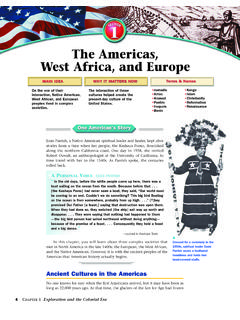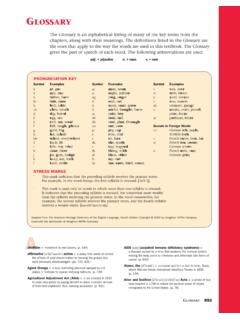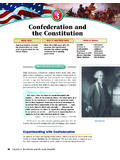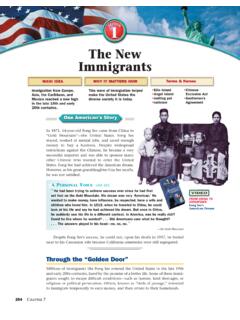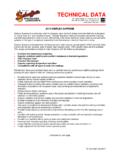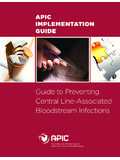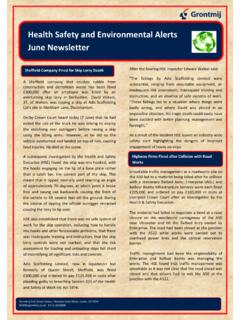Transcription of The Colonies Come of Age - mrlocke.com
1 The Colonies come of Age MAIN IDEA WHY IT MATTERS NOW Terms & Names Even though both Northern Regional differences between triangular trade French and and Southern Colonies Northern and Southern Colonies middle passage Indian War prospered, many colonists have survived in the culture Enlightenment William Pitt began to question British and politics of the modern Benjamin Franklin Pontiac authority. United States. Great Awakening Proclamation Jonathan of 1763. Edwards One American's Story In 1773, Philip vickers Fithian left his home in Princeton, New Jersey, for the unfamiliar world of Virginia.
2 Fithian, a theology student, had agreed to tutor the children of Robert Carter III and his wife at their magni cent brick manor house. In Fithian's journal of his one-year stay there, he recalled an evening walk along the property. A PERSONAL VOICE PHILIP vickers FITHIAN. We stroll'd down the Pasture quite to the River, admir- ing the Pleasantness of the evening, & the delightsome Prospect of the River, Hills, Huts on the Summits, low Bottoms, Trees of various Kinds, and Sizes, Cattle &. Sheep feeding some near us, & others at a great dis- tance on the green sides of the Hills.
3 Journal & Letters of Philip vickers Fithian . Plantations, or large farms, like the Carters' played a The Shirley plantation house in Virginia dominant role in the South's economy, which had come is representative of many old Southern mansions. Built in 1723, it was the to rely heavily on agriculture. The development of this birthplace of Ann Hill Carter, the mother plantation economy led to a largely rural society, in which of Civil War general Robert E. Lee. enslaved Africans played an unwilling yet important role. A Plantation Economy Arises in the South While there were cities in the South, on the whole the region developed as a rural society of self-suf cient plantations.
4 Plantations sprang up along the rivers, mak- ing it possible for planters to ship their goods directly to the Northern Colonies and Europe without the need for public dock facilities. Because plantation own- ers produced much of what they needed on their property, they did not often need shops, bakeries, and markets. REVIEW UNIT 31. Plantations specialized in raising a single cash crop one grown primarily for sale rather than for livestock feed. In Maryland, Virginia, and North Carolina, planters grew tobacco. Planters in South Carolina and Georgia harvested rice and later indigo (for blue dye) as cash crops.
5 LIFE IN A DIVERSE SOUTHERN SOCIETY In addition to English settlers, thou- sands of German immigrants as well as Scots and Scots-Irish settled in the South. Women in Southern society, as in the North, endured second-class citizenship. For the most part they could not vote, preach, or own property. While small farmers made up the majority of the Southern population, pros- perous plantation owners controlled much of the South's economy as well as its political and social institutions. At the bottom of Southern society were enslaved Africans. In the 18th centu- ry, Southerners turned increasingly to slavery to ll the labor needs of their agri- MAIN IDEA.
6 Cultural economy. By 1690, about 13,000 slaves were working in the Southern Summarizing Colonies . By 1750, the number of slaves had increased to more than 200,000. A A Describe the social structure of THE MIDDLE PASSAGE During the 17th century, Africans had become part of Southern society. a transatlantic trading network described as the triangular trade. This term refers to a trading process in which goods and enslaved people were exchanged across the Atlantic Ocean. For example, merchants carrying rum and other goods from the New England Colonies exchanged their merchandise for enslaved Africans.
7 Africans were then transported to the West Indies where they were sold for sugar and molasses. These goods were then sold to rum producers in New England and the cycle began again. The voyage that brought Africans to the West Indies and later to North America was known as the middle passage, after the middle leg of the transatlantic trade triangle. Extreme cruel- ty characterized this journey. In the ports of West Africa, European traders branded Africans for identification and packed them into the dark holds of large ships. On board a slave ship, Africans were beat- en into submission and often fell victim to dis- eases that spread rapid- ly.
8 Some committed sui- cide by jumping over- board. Nearly 13 per- cent of the Africans aboard each slave ship perished during the . This plan and section of the British slave ship Brookes was published in London around 1790. by a leading British antislavery advocate named Thomas Clarkson. The image effectively conveys the degradation and inhumanity of the slave trade, which reduced human beings to the level of merchandise. 32 CHAPTER 1 Exploration and the Colonial Era brutal trip to the New World. One enslaved African, Olaudah Equiano, MAIN IDEA. recalled the inhumane conditions on his trip from West Africa to the Making West Indies in 1762 when he was 12 years old.
9 B. Inferences B If 13 percent of the enslaved A PERSONAL VOICE OLAUDAH EQUIANO. Africans died on the journey to The closeness of the place and the heat of the climate, added America, why did to the number in the ship, which was so crowded that each had the merchants scarcely room to turn himself, almost suffocated us. This pro- treat them duced copious perspirations, so that the air soon became un t for so badly? respiration from a variety of loathsome smells, and brought on a sickness among the slaves, of which many died.. The Interesting Narrative of the Life of Olaudah Equiano AFRICANS COPE IN THEIR NEW WORLD Africans who survived the ocean voyage entered an extremely dif cult life of bondage in North America.
10 Olaudah Equiano Probably 80 to 90 percent worked in the elds. The other 10 to 20 percent worked as domestic slaves or as artisans. Domestic slaves worked in the houses of their masters, cooking, cleaning, and helping to raise the master's children. Artisans developed skills as carpenters, blacksmiths, and bricklayers and were sometimes loaned out to the master's neighbors. In the midst of the horrors of slavery, Africans developed a way of life based on their cultural heritage. They kept alive their musical, dance, and storytelling traditions. When a slave owner sold a parent to another plantation, other slaves stepped in to raise the children left behind.

